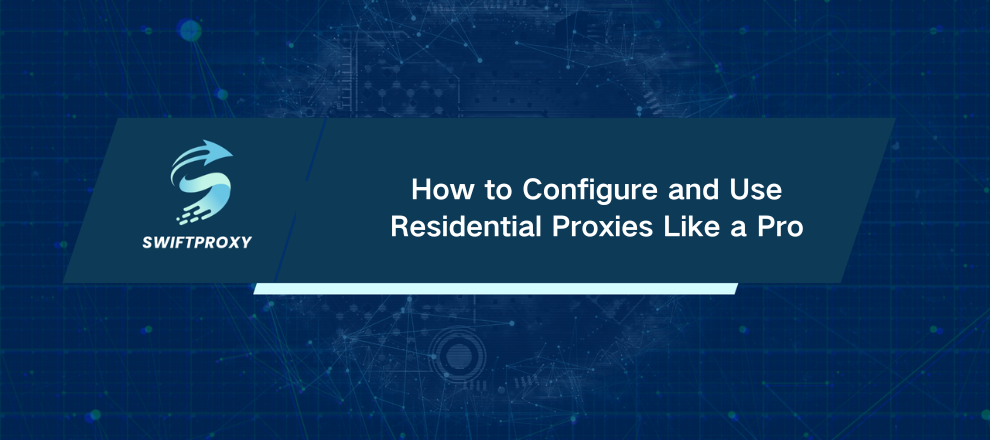How to Configure and Use Residential Proxies Like a Pro

Over 90% of websites actively block datacenter IPs to fight bots. That's a problem. But residential proxies? They slip right past those walls. Why? Because they look like real users, connecting from real homes. No fake data centers. No obvious fingerprints.
Residential proxies route your requests through actual ISP-assigned IP addresses. The result is that websites see you as an everyday home user. This allows you to dodge geo-blocks, CAPTCHAs, and bot defenses that would block typical proxy IPs. They are perfect for tasks demanding stealth such as web scraping, SEO monitoring, social media bots, or ad verification.
Why Residential Proxies Matter
Datacenter proxies are fast but glaringly obvious. Sites detect and block them in seconds. Residential IPs? Much harder to flag or ban. Social networks, classifieds, and major e-commerce platforms watch for datacenter subnets like hawks — residential IPs fly under their radar.
This difference translates to higher success rates. Scraping Google results or price-checking Amazon? Residential proxies keep your access steady. Checking how ads display in different regions? Only residential proxies can mirror the genuine user view. It's the difference between being blocked and being welcomed.
Configuring the Residential Proxies
Each Residential proxy is formatted like this: IP:Port:Username:Password. You use it in your app or tool by formatting it as a URL, which works for HTTP and SOCKS proxies. To verify it's working, you can run a simple command that shows the proxy IP instead of your own.
Authentication Made Simple
By default, proxies require username/password authentication. Insert these in your proxy URL or use your tool's auth options. For Selenium or browser automation, passing credentials can get tricky. The workaround? Whitelist your machine's IP inside your proxy dashboard, then connect without credentials. Cleaner, easier, no popups.
Protocols and Compatibility
HTTP and SOCKS5 protocols both have perks. SOCKS5 is versatile, handling any TCP traffic. HTTP is straightforward and widely supported. Always double-check your proxy URL scheme (socks5:// vs http://) to avoid connection issues.
Plugging Proxy Into Your Workflow
Almost every scraping or automation tool supports proxies. Browsers let you input IP, port, and credentials in proxy settings or use a proxy extension. Selenium or Puppeteer can accept proxy arguments or whitelist IPs to avoid authentication headaches. Scrapy spiders let you rotate proxies for each request to avoid bans. Command-line tools like curl or wget support proxy flags for easy setup.
Advanced Tips for Proxies That Work
Geo-targeting: Pick the country at purchase for localized IPs.
Session control: Need sticky sessions? Use a static proxy to keep your IP consistent. Rotating proxies shuffle IPs per connection, boosting anonymity but breaking session continuity.
Common errors: HTTP 407 means authentication failed—double-check credentials. Errors like 502 or 522 often mean no suitable IPs are available right now; try again or loosen filters.
Real-World Use Cases
Whether you're running stealthy SEO monitoring, verifying ads across markets, or automating social media accounts, residential proxies are your secret weapon. They look and behave like real users, giving you access where datacenter proxies get blocked.
Wrapping Up
Residential proxies are more than just tools. They can mean the difference between getting blocked and achieving your goals online. They provide easy setup, access to global IP addresses, strong protocol compatibility, and flexible authentication methods. By integrating them with your scraper, browser, or bot, success rates improve significantly.
If you need to act like a real user online—whether scraping, testing, or automating—residential proxies are non-negotiable.

















































